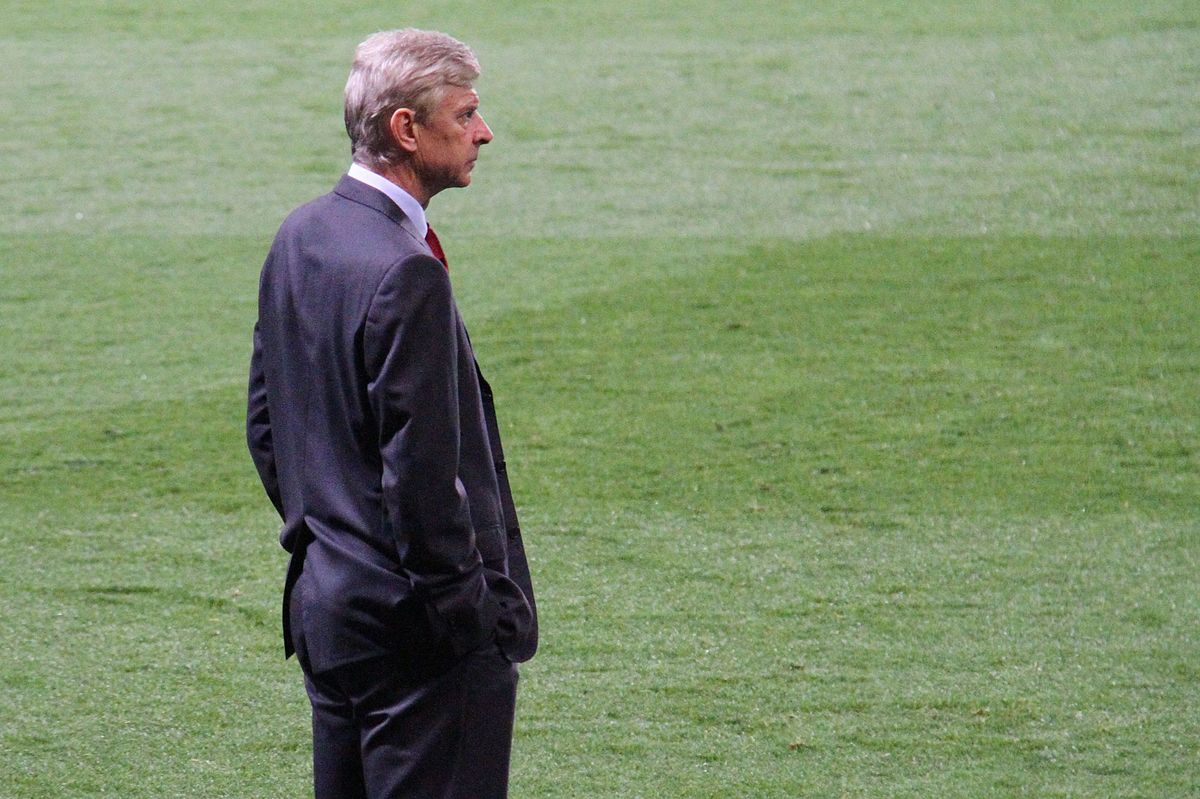Invincible: does Arsene Wenger deserve an Emirates Stadium statue?
In September, 2002, Arsene Wenger optimistically predicted that his team “can go through the season unbeaten”. They were beaten just two weeks later away by Everton. Wenger’s confident prediction was considered a gaffe highlighting his arrogance and stubborn belief in his revolutionary approach to football. The next season ensured this ‘gaffe’ was quickly forgotten as Arsenal made history remaining unbeaten all season.
This story explains Wenger’s relationship with English football. The British media were sceptical of the arrogant ‘Le Professeur’, before turning to admire Wenger due to his magnificent results. His revolutionary commitment fluid, passing football, strict nutrition, and international recruitment are now commonplace in the Premier League. Wenger deserves recognition in the form of a statue outside the Emirates Stadium.
Admittedly, Wenger’s Arsenal reign can be split into two distinctive eras, the Highbury era (1996-2006) and the Emirates era (2006-2018). The Highbury era was a transformative period in English football, when Wenger implemented his ideas and enjoyed the success of his tactical labour. Sadly, the Emirates era can only be defined by the North London club’s steady decline.
The Wenger touch ceased to give Arsenal a competitive advantage
Arsenal’s trophy haul sums this up: 3 Premier Leagues, 4 FA Cups and a Champions League Final in the Highbury era; compared to just 3 FA Cups in the Frenchman’s final twelve years with the Gunners. At the beginning of Wenger’s time at Arsenal, the mixture of fitness, fluidity and cosmopolitan talent meant they could carve through teams with pacey, accurate passing. Once other teams adapted these policies, caught up, and then surpassed Arsenal’s nutrition, tactical play and recruitment, the Wenger touch ceased to give Arsenal a competitive advantage. The world had changed; ‘Le Professeur’ never did.
Arsenal’s failure to adapt in the final twelve years of Wenger’s premiership has taken far too much weight in the minds of pundits, a case of recency bias. Longevity is the hardest task for a football manager, let alone such a revolutionary manager. The revolutionaries of the past, Cruyff, Chapman and Clough, experienced heydays limited to around ten years. A similar pattern can be seen of revolutionary contemporaries: Mourinho and Saachi both had a successful decade of management, before a noted decline as their methods were copied and nullified by rivals.
History will not remember their waning but their revolutions. This should be the same for Arsene Wenger, his highs are truly memorable.
Pires’s aloofness, Vieira’s aggression and Henry’s arrogance can all be seen in Arsenal’s golden era
In a similar vein to Cruyff or Guardiola, Wenger created a team which didn’t just win, he created something with true aesthetic quality. In fact, Wenger’s team focussed more on the expression of the individual than either of Cruyff or Guardiola, who both created systems where the individual is sacrificed for the good of the team. While these coaches meticulously drilled these systems into their teams, Wenger would take his players to the gym to play basketball to sharpen their instinctive spontaneity in attack. This allowed Arsenal to create beautiful goals that embodied their personalities: Pires’s aloofness, Vieira’s aggression and Henry’s arrogance can all be seen in Arsenal’s golden era.
In many respects it was this focus on the individual that led to Wenger’s downfall, a new generation of footballer emerged who shunned the responsibility placed on them often making Arsenal look weak or chaotic.
It is true that Wenger had his flaws. By the time of his departure from Arsenal, Wenger’s methods were out-of-date and his team had stagnated. However, the club should recognize him for the genuine footballing pioneer he was, who created ‘the invincibles’, revolutionised English football and developed a beautiful playstyle that allowed individuals to express themselves at the highest level of football. A man befitting of that recognition deserves a statue, placed front and centre, at the Emirates Stadium.

Comments